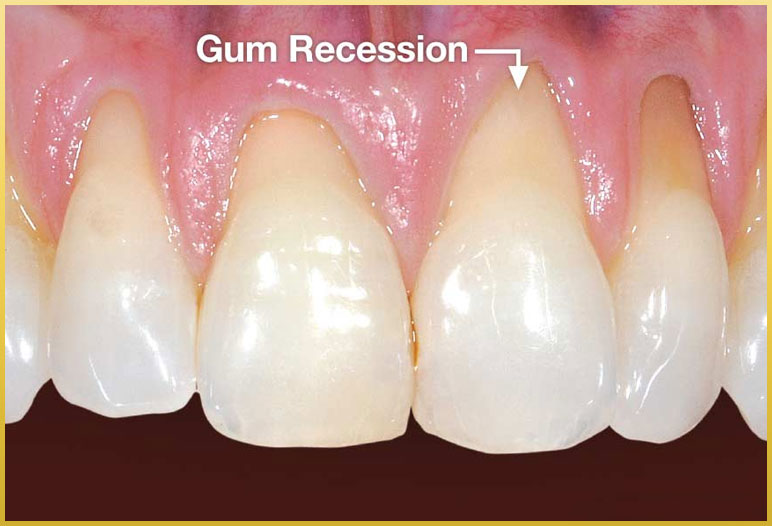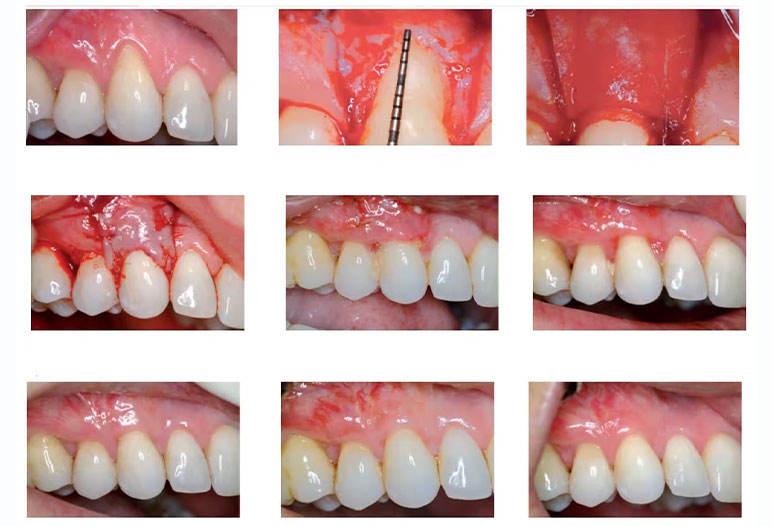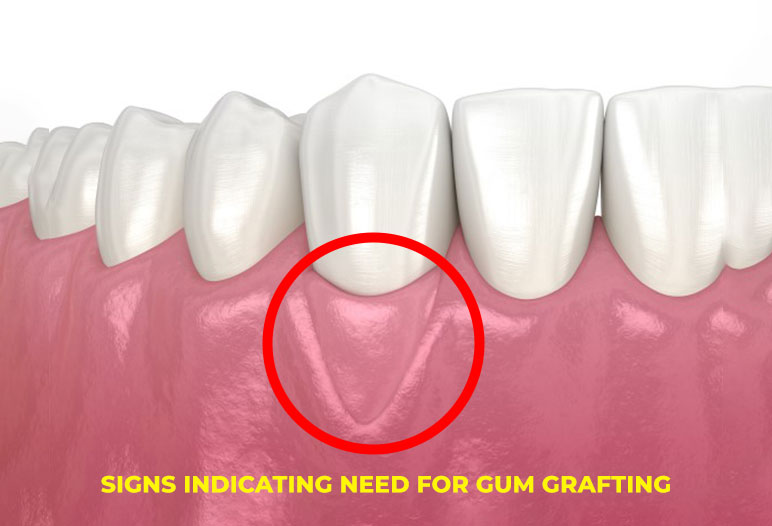How much does a gingival graft cost? This question often arises when individuals confront the reality of gum recession and its associated challenges. The process of restoring the gum tissue not only rejuvenates one’s smile but also plays a crucial role in safeguarding overall oral health. In this article, we will explore the various aspects of gum grafting including costs, types of procedures, insurance coverage, and candidacy for the procedure.
Understanding gum recession and its implications
Gum recession is a prevalent dental issue that can lead to significant consequences if left untreated. As gum tissue wears down, it exposes the roots of teeth, leading to sensitivity, decay, and even tooth loss. By delving deeper into the causes, effects, and management strategies for gum recession, individuals can better appreciate the need for gum grafts.
What causes gum recession?
Gum recession can be attributed to several factors, each requiring specific attention.
- Poor Oral Hygiene Neglecting basic oral care routines leads to plaque buildup, which results in periodontal disease—the primary culprit behind gum recession. Without proper cleaning, bacteria thrive, causing inflammation and loss of gum tissue over time.
- Genetics Some individuals are genetically predisposed to gum disease. If you have a family history of periodontal issues, it is wise to maintain regular dental visits and practice vigilant oral hygiene.
- Hormonal Changes For women, hormonal fluctuations during puberty, menstruation, pregnancy, or menopause could affect their gums’ health. Increased sensitivity during these times can lead to gum recession if not managed properly.
- Tobacco Use Smoking and chewing tobacco are notorious for aggravating gum problems. They reduce blood flow to the gums, impairing healing processes and predisposing users to gum recession.
Understanding these causes emphasizes the importance of timely intervention, such as gum grafting, to restore healthy gum tissue and mitigate further damage.

Effects of gum recession
The implications of gum recession extend beyond aesthetic concerns; they encompass various health risks.
- Tooth Sensitivity Exposed tooth roots can cause discomfort when consuming hot or cold foods. The nerve endings in the roots become exposed, leading to heightened sensitivity and pain.
- Increased Risk of Decay With the roots exposed, there is an elevated risk of decay. Roots lack enamel, making them more susceptible to cavities. Once decay sets in, treatment becomes more complex and costly.
- Cosmetic Concerns Beyond physical discomfort, gum recession can impact self-esteem. Many individuals shy away from smiling due to the appearance of elongated teeth or visible root structures.
Consequently, addressing gum recession with effective solutions like gingival grafts is paramount to ensuring both health and confidence.
Benefits of gum grafting
Gum grafting offers numerous advantages, enhancing both health and aesthetics.
- Restoration of Gum Tissue By covering exposed roots, gum grafts facilitate the growth of healthy gum tissue, reducing the likelihood of further recession.
- Protection Against Tooth Loss A successful gum graft can significantly decrease the risk of tooth decay and loss, preserving your natural teeth for a longer period.
- Improved Aesthetics Gum grafts not only restore functionality but also enhance the visual appeal of one’s smile. Patients often leave feeling revitalized, ready to showcase their new smiles.
Understanding these benefits highlights the value of investing in gum grafting, despite any associated costs.
The procedure: What to expect during gum grafting
When considering gum grafting, it is essential to understand the procedure itself. Knowing what to expect can help ease anxiety and prepare individuals for the journey ahead.
Types of gum grafts
Gum graft surgery consists of different types, each tailored to specific needs.
- Connective Tissue Graft The most common method involves taking tissue from the roof of the mouth and grafting it onto the receded area. This technique allows for efficient coverage of exposed roots while promoting healing.
- Free Gingival Graft This approach uses tissue directly from the surface of the palate. It is beneficial for individuals who may require extra gum tissue to augment thin or weakened gums.
- Pedicle Graft In cases where sufficient gum tissue exists near the receding area, a pedicle graft may be performed. This method preserves the surrounding tissues while relocating existing gum to cover the exposed area.
Understanding the nuances of each type empowers patients to make informed decisions alongside their dentists.
Step-by-step process of gum grafting
Knowing the stages of the gum grafting procedure can provide clarity and instill confidence.
- Consultation Before the procedure, patients undergo a thorough examination. Dentists evaluate the extent of gum recession and recommend the most suitable graft type based on individual needs.
- Preparation On the day of the procedure, local anesthesia or sedation options are discussed to ensure comfort. Preparing for aftercare—including potential pain management—also forms part of this step.
- Grafting Procedure During the surgery, the dentist carefully takes the required tissue (from either the patient or a donor) and meticulously stitches it onto the affected area, ensuring proper alignment and protection for the delicate tissues.
- Recovery Period Post-surgery, patients typically experience some degree of swelling and discomfort. Dentists often prescribe medications and dietary recommendations to promote healing and alleviate any pain.
This comprehensive overview of the procedure helps demystify the process, allowing individuals to feel more at ease during their gum grafting journey.

Costs associated with gum grafting
A pivotal aspect of planning for gum grafting involves understanding the financial implications. The national average cost for gum graft surgery hovers around $2,742, but various factors influence this pricing.
Factors influencing cost
Several elements can contribute to the final price of gum grafting.
- Type of Gum Graft Different graft types come with varying costs. Connective tissue grafts might carry a higher price compared to pedicle grafts, owing to the complexity involved.
- Condition Severity Patients with severe gum recession may require additional procedures or treatments, affecting the overall cost. Those needing grafting on multiple teeth will similarly see increased expenses.
- Anesthesia Options Choosing between local or general anesthesia can impact costs significantly. General anesthesia generally incurs higher fees due to increased staff and equipment requirements.
Insurance coverage considerations
Navigating insurance coverage for gum grafting can be daunting yet critical for managing costs effectively.
- Dental Insurance Plans Many dental plans offer partial coverage for gum grafts, particularly if a certain level of gum recession is present. However, patients should check the specifics of their plans, as coverage varies widely.
- Medical Insurance In cases where gum grafting is deemed medically necessary, some health insurance policies may provide coverage. It’s advisable to consult with insurers before proceeding with surgery.
Understanding these financial aspects promotes transparency and empowers individuals to budget accordingly for their gum grafting procedure.
State-by-state cost variances
Interestingly, costs for gum grafting can vary significantly across states, influenced by regional economic conditions and demand for dental services. For instance:
- California may exhibit higher average costs than states like Alabama, reflecting differences in living expenses and market demand.
- Urban areas often feature higher prices due to increased overhead for dental practices compared to rural settings.
By acknowledging these variances, individuals can seek the best options available to them, potentially including travel to other areas for more favorable pricing.
Who is good candidate for gum grafting?
Not everyone experiencing gum recession will require gum grafting; understanding candidacy criteria is vital.
Signs indicating need for gum grafting
Recognizing symptoms that suggest the need for gum grafting can prompt timely intervention.
- Visible Gum Recession If you notice that your gums are pulling away from your teeth, exposing more of your tooth structure, it may be time to explore gum grafting options.
- Persistent Tooth Sensitivity Experiencing discomfort when consuming hot or cold beverages can indicate sensitive roots, warranting a professional evaluation.
- History of Gum Disease Individuals with previous gum disease episodes should consider gum grafting to prevent further complications and preserve remaining gum tissue.
These signs serve as red flags, urging individuals to consult dental professionals regarding potential treatments.

Assessing overall dental health
Before undergoing gum grafting, a thorough assessment of overall dental health is crucial.
- Non-Smoking Status Smokers may face challenges in healing post-grafting due to diminished blood circulation. Dentists often advise quitting smoking prior to surgery to improve outcomes.
- Control of Underlying Conditions Conditions such as diabetes can complicate healing processes. Proper control of such conditions is essential for candidacy.
- Commitment to Aftercare Candidates must demonstrate a willingness to follow post-operative instructions and maintain good oral hygiene practices to achieve optimal results.
Recognizing these requirements enhances the likelihood of success, enabling individuals to navigate their gum grafting journeys confidently.
Conclusion
Investing in gum grafting is a significant decision that can yield long-term benefits for oral health, aesthetics, and self-confidence. By understanding the intricacies of the procedure, its associated costs, and candidacy criteria, individuals can make informed choices about their dental futures. Ultimately, a healthy smile is worth the investment in gum grafting, paving the way for improved quality of life and enhanced well-being. If you’re grappling with gum recession, consulting a dental professional could be the key to restoring your smile and safeguarding your oral health in the long run.

 Google Reviews
Google Reviews Call
Call
SAIGON IMPLANT CENTER
Best dentist in Vietnam
Saigon Implant Center - Dental Clinic utilizes the latest technology for specialized treatment in the field of Single implant, full jaw implants, All on 4 implants, All on 6 implants, Zygoma implant....
SAIGON IMPLANT CENTER
Best dentist in Vietnam
Saigon Implant Center - Dental Clinic utilizes the latest technology for specialized treatment in the field of Single implant, full jaw implants, All on 4 implants, All on 6 implants, Zygoma implant....